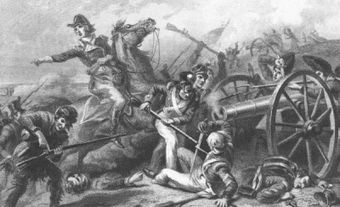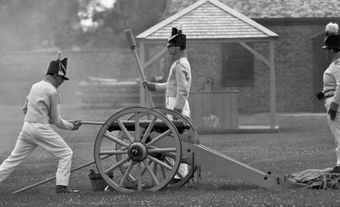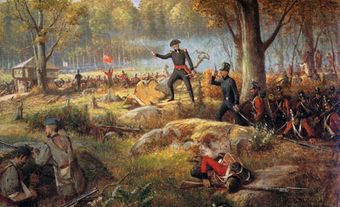Fort Malden National Historic Site in Amherstburg, Ont, commemorates 2 forts constructed on the same site by the British on the eastern bank of the Detroit River: Fort Amherstburg, constructed from 1796-99, and Fort Malden, built between 1815 and 1842. The forts were built to protect the Canadian border from American attack and during the War of 1812, Fort Amherstburg was the principal military base on Lake Erie.
The Historic Sites and Monuments Board of Canada recognized the site as having national historical importance in 1921. In 1939, a museum was built on a small part of the original fort. Over the years, Parks Canada has added to the protected area with most of the second fort area now in public hands. Fort Malden National Historic Site features a restored 1819 barracks building, remnants of the 1840-period earthworks and 2 other buildings. Guides in period costume help visitors to understand and relate to the site's colourful past with stories and period demonstrations. Fort Malden displays the most extensive collection of original War of 1812 and rebellion era artifacts in Canada.
Fort Amherstburg
The British had occupied Fort Detroit since 1763 and continued to do so for 13 years after the Treaty of Paris ended the American Revolution and placed Detroit in the new United States. The British finally abandoned Detroit in 1796 by the terms of Jay's Treaty. Near to where the Detroit River empties into Lake Erie, they immediately began construction of a shipyard and military defences. The site served as the headquarters of the Right Division of the British Army in Upper Canada, the naval station for the Upper Great Lakes (the Provincial Marine) and the main base of the British Indian Department for establishing and maintaining alliances with the First Nations of the Upper Lakes and Ohio Valley.
After war was declared by the United States on 18 June 1812, the fort played its most important role. It was here that Major General Isaac Brock met with the Shawnee War Chief Tecumseh to launch a successful attack on Detroit, leading to the surrender of the entire territory of Michigan. First Nations allies then flocked to Fort Amherstburg to accompany soldiers of the British 41st Regiment of Foot and Canadian Militia in campaigns against the Americans in the Old Northwest [Upper Midwest States].
Following the Battle of Lake Erie on 10 September 1813, British supply lines were cut and Fort Amherstburg was no longer tenable. British Major General Henry Procter ordered the post burned and retreated up the Thames River. The Americans occupied the fort - and used the name of the township, Malden - for the rest of the war.
Fort Malden
The British returned on 1 July 1815 and slowly began rebuilding the fort, incorporating the ruins of the earthworks from the first structure into a new one, but occupying a much smaller area. During the Rebellions of 1837, the garrison saw action against rebel forces in 1838 at the battles of Fighting Island, Pelee Island and Sandwich (Windsor). Fort Malden was rebuilt in earnest during this period. The British army continued to maintain a garrison at Fort Malden until 1851 when the regular soldiers were withdrawn and replaced by Enrolled Pensioners who acted as caretakers until 1859 when the post was finally closed.
After Fort Malden ceased to be a military installation, the government of Canada West converted it for use as a "lunatic" asylum, a role that it served for the next 11 years. The property was later subdivided and sold as residential and industrial lots and most of the buildings demolished or moved from the site.

 Share on Facebook
Share on Facebook Share on X
Share on X Share by Email
Share by Email Share on Google Classroom
Share on Google Classroom


